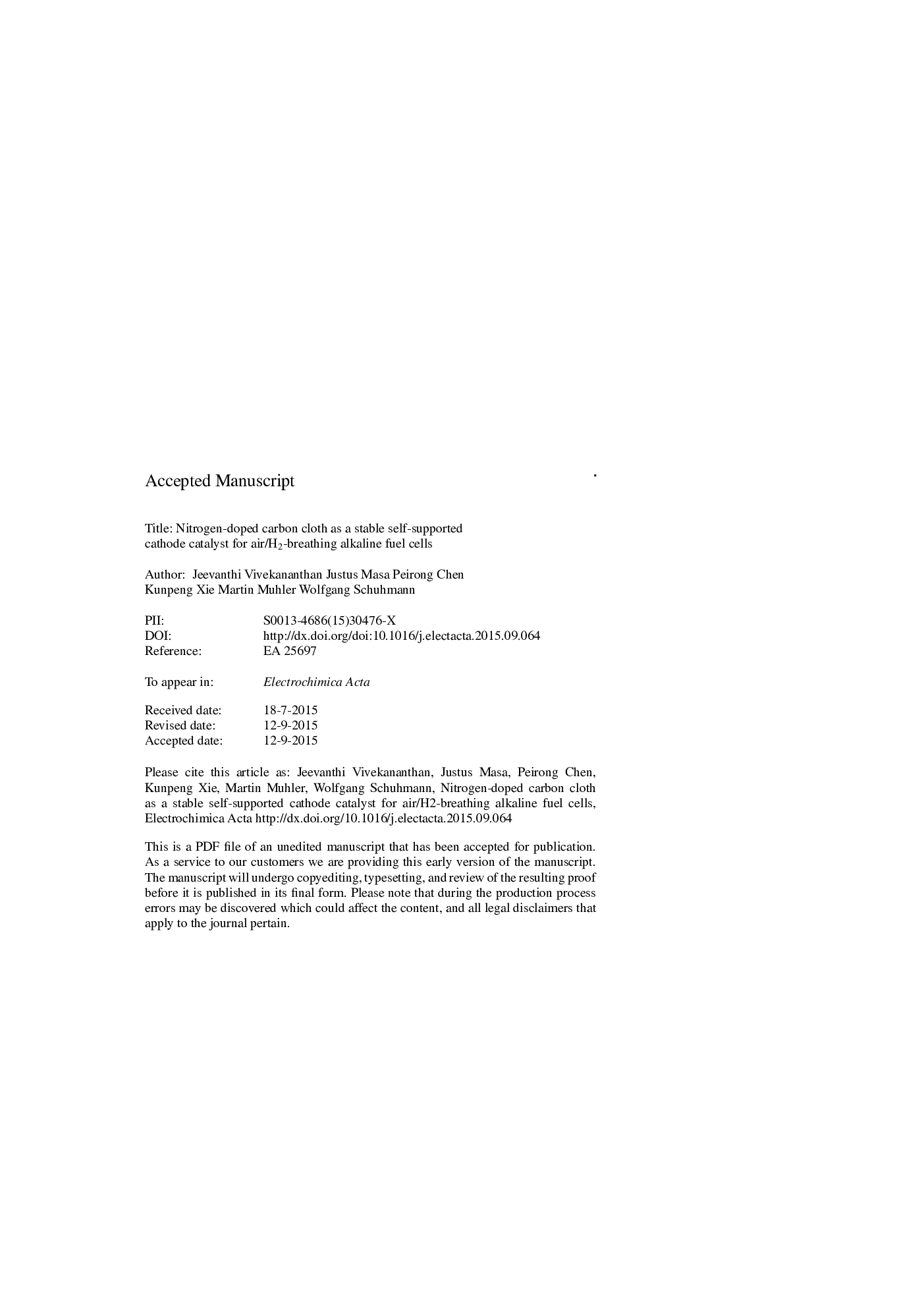| Article ID | Journal | Published Year | Pages | File Type |
|---|---|---|---|---|
| 6609912 | Electrochimica Acta | 2015 | 23 Pages |
Abstract
The power output of a fuel cell is limited by among others, the intrinsic activity of the active matrix and the mass transport of the products and reactants. Of equally crucial importance is the long-term durability of the cell components including the electrocatalysts. Herein, carbon cloth (CC) was functionalized with nitrogen-containing groups by treatment with NH3 at 400 °C or by pyrolysis of a composite of polypyrrole on CC at 800 °C. The resulting N-doped CC (NCC) was employed as an air-breathing cathode in a custom-made air/H2 alkaline fuel cell, serving as the current collector as well as catalytic matrix with enhanced oxygen transport. The cell exhibited high operational durability with only 2% loss in activity after 25 days and delivered a maximum power density of 120 mW mâ2 at a voltage of 0.35 V. The concept of a self-supported highly stable metal-free catalyst and the breathing H2/air cell design provide platforms for the design and investigation of catalysts. Moreover, a higher cell voltage can be realized if the cell is operated under pressurized conditions or by replacing air with O2.
Related Topics
Physical Sciences and Engineering
Chemical Engineering
Chemical Engineering (General)
Authors
Jeevanthi Vivekananthan, Justus Masa, Peirong Chen, Kunpeng Xie, Martin Muhler, Wolfgang Schuhmann,
